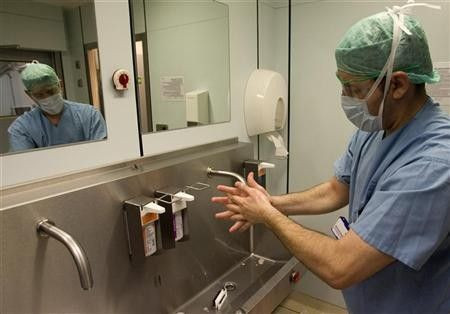Robots cut spread of common hospital bacterial infection among cancer patients

Ultraviolet, or UV, robots help reduce the transmission of a common bacterial infection among cancer inpatients, according to infection control specialists from Penn Medicine in Pennsylvania, US.
The new research reveals that in addition to conducting tasks to help better treat cancers, robots cut spreading the Clostridium difficile, or C. diff, by 25 per cent. The findings were presented at the annual ID Week meeting, a combined meeting of the Infectious Diseases Society of America, the Society for Healthcare Epidemiology of America, the HIV Medicine Association and the Pediatric Infectious Diseases Society.
Going beyond the usual cleaning tactics, including scrubbing, mopping and spraying, the robots help reduce transmission of such infections by flashing UV lights to lock onto DNA of organisms and kill them.
“There weren’t a lot of studies showing the efficacy of UV lights to clean hospital rooms. These results help fill that gap. This is a cost-saving measure that showed a sizeable reduction in infections for a high-risk group of patients – and set the stage for further implementation of the technology at our hospitals,” said Dr David Pegues, who presented the data during the event. Pegues is a professor of Infectious Diseases in Penn’s Perelman School of Medicine, and a healthcare epidemiologist in the Hospital of University of Pennsylvania's Infection Prevention and Control.
In their research, the team found that using a UV germicidal irradiation robot after a room cleaning reduced the number of infections in cancer patients compared to the year prior with no robot. Infections also increased by 16 per cent on units without the robot during the study period, the group reports.
While C. diff is not as deadly as other bacteria, they are more difficult to clean. They forms spores that are resistant to many disinfectants and can persist in the hospital environment for months. Cancer patients are more susceptible to infections caused by bacteria than other in-patients because their immune systems may have turned weaker from stem cell transplants or chemotherapy.
For the study, the researchers compared C. diff rates from 2013 with that of 2014, when the robot was deployed. They analysed the site on oncology floors where majority of the patients were being treated for blood cancers including leukemia and multiple myeloma. In 2014, the team used the ultraviolet robot for more than 20 percent of all patient discharges on three study units. After rooms were cleaned, the robot was deployed for two eight-minute cycles on either side of the patient bed with the bathroom door left open. Based on the experiment, the researchers found there was a 25 percent reduction in C. diff cases during the 52-week intervention period compared with 2013.
In addition to cutting down the incidence of C. diff, using the UV robot also did not affect the cleaning time, which is approximately 36 minutes. While the researchers did not employ additional cleaning staff during the evaluation, the team says this is needed to improve and spread the use of UV light for disinfection.
As one of the most common hospital transmitted bacteria, C. diff affects approximately 500,000 every year in the U.S., and nearly 15,000 die directly from the infection. In Australia, where it first spiked in 2011, the bacteria infect at least 150 patients in New South Wales hospitals every month. It also has been detected in 450 hospitals across the country, according to health officials.
Contact the writer at feedback@ibtimes.com.au or tell us what you think below.





















